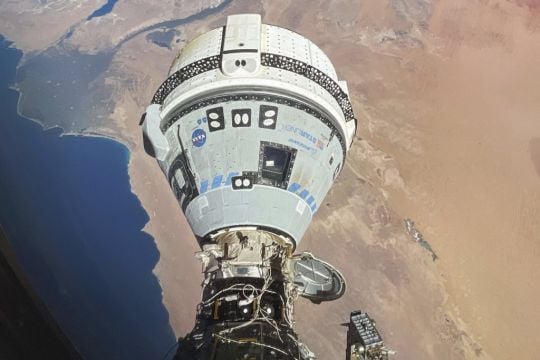Two Nasa astronauts will stay longer at the International Space Station as engineers troubleshoot problems on Boeing’s new space capsule that cropped up on the trip there.
Nasa on Friday did not set a return date until testing on the ground was complete and said the astronauts were safe.
“We’re not in any rush to come home,” said Nasa’s commercial crew programme manager Steve Stich.
Veteran Nasa test pilots Butch Wilmore and Suni Williams blasted off aboard Boeing’s Starliner capsule for the orbiting laboratory on June 5.
Yesterday, @NASA_Astronauts Butch Wilmore and Suni Williams activated Safe Haven procedures and sheltered inside #Starliner when crews learned of space debris near @Space_Station.
Starliner stood ready to undock and return Wilmore and Williams to Earth if needed, but the debris… pic.twitter.com/KgQbQE3ACqAdvertisement— Boeing Space (@BoeingSpace) June 27, 2024
It was the first astronaut launch for Boeing after years of delays and setbacks.
The test flight was expected to last a week or so, enough time for Mr Wilmore and Mr Williams to check out the capsule while docked at the station.
But problems with the capsule’s propulsion system, used to manoeuvre the spacecraft, prompted Nasa and Boeing to delay the flight home several times while they analysed the trouble.
They also wanted to avoid conflicting with spacewalks by station astronauts.
As Starliner closed in on the space station a day after launch, last-minute thruster failures almost derailed the docking.
Five of the capsule’s 28 thrusters went down during docking; all but one thruster was restarted.
Starliner already had one small helium leak when it rocketed into orbit and several more leaks sprung up during the flight.
Helium is used to pressurise fuel for the thrusters. Boeing said this week that the two problems are not a concern for the return trip.
In delaying the astronauts’ return, Nasa and Boeing said they needed more time to collect information about the thruster trouble and leaks while the capsule was docked.
Both are in the service module, a unit attached to the capsule that burns up during reentry.
After the space shuttle fleet retired, Nasa turned over astronaut rides to private companies.
Elon Musk’s SpaceX has made nine taxi flights for Nasa since 2020. Nasa plans to alternate between SpaceX and Boeing in ferrying crews to and from the space station.







